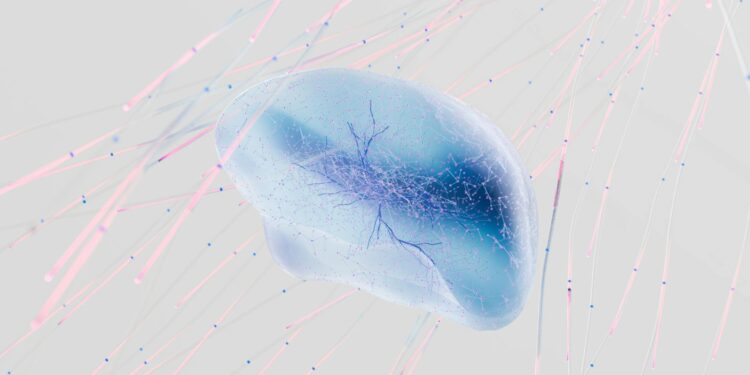As artificial intelligence rapidly integrates into virtually every device and application, from our smartphones and smart homes to industrial machinery and complex data centers, a fundamental question emerges: are we on the cusp of a profound shift in computing? This pervasive embedding of AI, moving beyond mere features to become the very fabric of how technology operates, suggests a transformative period. We are witnessing AI evolve from a specialized tool into a foundational layer, capable of understanding context, anticipating needs, and orchestrating interactions across an expanding digital landscape. Could this widespread integration truly signify the birth of a new computing era, one where AI effectively functions as the universal operating system, redefining how we interact with technology and how technology interacts with itself?
The ubiquitous presence of ai
The journey of AI from specialized algorithms to an omnipresent force is undeniable. Initially confined to labs and complex enterprise solutions, AI now permeates our daily lives in subtle yet significant ways. Consider the smart thermostat learning your preferences, the voice assistant managing your schedule, or the predictive text on your phone. Beyond consumer devices, AI powers autonomous vehicles, optimizes supply chains, and enhances medical diagnostics. This isn’t just about AI applications running on top of existing operating systems; it’s about AI being embedded deeply within device firmware, cloud infrastructure, and network protocols. Every new sensor, every connected appliance, and every piece of data collected feeds into an ever-growing, interconnected intelligence. This sheer scale and depth of integration mean AI is no longer a guest in our digital homes; it is increasingly becoming the architecture of the house itself, a silent, intelligent layer orchestrating countless operations in the background.
AI as an orchestration layer
The concept of AI as a universal operating system truly crystallizes when we consider its potential as an orchestration layer. A traditional operating system manages hardware resources, runs applications, and provides a user interface for a single device. An AI operating system, however, extends this functionality across a distributed network of devices, sensors, and data streams. It would not just manage a single processor, but rather intelligently allocate compute resources across a global network. It would not just run applications, but rather orchestrate a symphony of interconnected services and data flows based on real-time context and user intent. Imagine an AI layer that seamlessly integrates your smart home devices, your vehicle, your workplace systems, and even public infrastructure. This AI would anticipate your needs, pre-emptively adjust settings, route information, and execute tasks across disparate systems, providing a unified, context-aware experience far beyond what any single device’s OS could achieve. It becomes the intelligent fabric that weaves together the Internet of Things, transforming a collection of smart devices into a truly responsive and adaptive environment.
Shifting paradigms: interaction and development
If AI truly becomes the universal operating system, it will fundamentally redefine how we interact with technology and how developers build it. User interfaces, traditionally reliant on screens, keyboards, and mice, will become increasingly conversational, predictive, and ambient. Our interactions will shift from explicit commands to natural language dialogues, gestures, and even passive data inputs interpreted by the AI. The system will anticipate needs, offering solutions before we even formulate the query. For developers, this means moving away from programming for specific hardware or conventional OS APIs to building AI-first applications that leverage the ambient intelligence layer. The focus will shift from low-level resource management to designing intelligent services that interact with the AI OS’s contextual understanding. This paradigm shift can be visualized:
| Feature | Traditional OS Model | AI Operating System Model |
|---|---|---|
| Core Function | Manages device hardware & software resources. | Orchestrates intelligence, context, & services across devices. |
| User Interaction | Graphical User Interface (GUI), Command Line. | Conversational, Predictive, Ambient, Multimodal. |
| Application Model | Programs installed on a specific device. | Distributed AI models & services, context-aware. |
| Device Scope | Limited to a single device (PC, phone). | Ubiquitous across IoT, cloud, edge, and personal devices. |
| Data Flow | Discrete, often siloed within applications. | Continuous, integrated, contextually enriched. |
This table illustrates a shift from device-centric computing to an experience-centric model, where the AI OS abstracts away the underlying complexity.
Navigating the future: challenges and considerations
While the prospect of an AI-driven universal operating system offers immense benefits in convenience and efficiency, it also introduces significant challenges and ethical considerations. Foremost among these are privacy and data security. An AI OS, by its very nature, would require access to vast amounts of personal and environmental data to function effectively. Ensuring the secure handling, anonymization, and ethical use of this data becomes paramount. Control and accountability are also major concerns; who is responsible when an AI-orchestrated system makes a critical error? The potential for algorithmic bias, inherent in the training data, could be amplified across a universal system, leading to widespread discrimination or unfair outcomes. Furthermore, the sheer power concentrated in such a system raises questions about monopolies, surveillance, and potential for misuse. As we advance towards this future, robust regulatory frameworks, transparent AI development, and a strong emphasis on user agency will be crucial to harnessing its benefits while mitigating its risks. The birth of this new computing era demands not just technological innovation, but also profound societal foresight and ethical governance.
The rapid integration of AI across devices and applications undeniably signals a profound shift in the landscape of computing. From intelligent assistants in our homes to complex orchestrators of industrial processes, AI is no longer just an add-on feature but an increasingly foundational layer. This article has explored how AI’s ubiquity is paving the way for it to act as a universal operating system, coordinating disparate technologies and providing a unified, context-aware experience. We’ve seen how this could redefine user interaction towards more intuitive, predictive models and transform application development into an AI-first approach. However, embracing this future necessitates confronting significant challenges, including concerns around data privacy, security, algorithmic bias, and accountability. Ultimately, while the full realization of AI as a universal operating system is still evolving, the current trajectory strongly suggests we are indeed witnessing the dawn of a new computing era. This era promises unprecedented intelligence and interconnectedness, but requires careful navigation to ensure it serves humanity’s best interests.



















